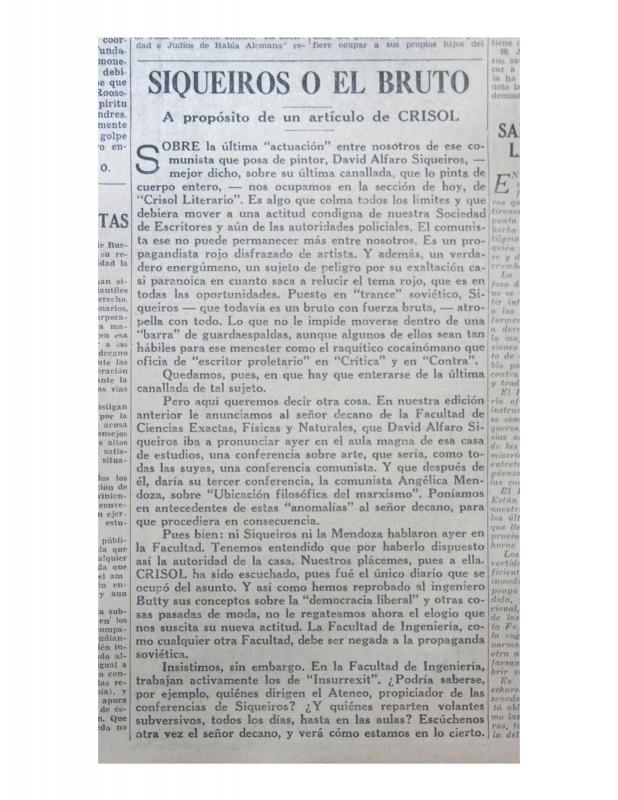Having been expelled from the United States, David Alfaro Siqueiros (1896–1974) traveled to Montevideo in February of 1933, and by the end of May in that same year he had established himself in Buenos Aires. In June he exhibited in Buenos Aires at Amigos del Arte [Friends of Art], a liberal and modernizing arts institution. He gave controversial lectures that polarized the arts field into the defenders of "arte puro" ["pure art"] and "arte político" ["political art"]. He received the support of Crítica [Critique], run by Natalio Botana. Botana commissioned Siqueiros to paint Ejercicio Plástico [Visual Exercise] in the cellar of his estate. The mural was made by the Equipo Poligráfico Ejecutor [Lead Polygraphic Team]—formed by Siqueiros, Antonio Berni (1905–1981), Lino Enea Spilimbergo (1896–1964), Juan Carlos Castagnino (1908–1972), and the Uruguyan set-designer Enrique Lázaro). Siqueiros’s position was supported by Contra. La revista de los francotiradores [Against: The Snipers’ Magazine], run by the leftist writerRaúl González Tuñón. (See the corresponding documents.) The magazine was run in accordance with the cultural directives of the Communist Party by poet Raúl González Tuñón, who was not officially affiliated with the party. During this period, Argentinean right-wingers strongly attacked the Mexican Communist painter in its publications Bandera Argentina [Argentinean Flag] and Crisol [Melting pot], which were representative of the Catholic nationalism that had gained momentum since the military coup of 1930 [see the documents corresponding to Siqueiros’s trip to Argentina: 733206, 734077, and 733182, among others].Siqueiros received criticism even from anarchists; in particular, from the painter Demetrio Urruchúa, who collaborated on Nervio [Nerve], a socialist libertarian publication. Amaro Martínez was an anarchist and intellectual from Paraguay who was for a time based in Argentina; Demetrio Urruchúa mentions him briefly in his autobiography Memorias de un pintor [Memoirs of a Painter (Buenos Aires: Hugo Torres y Cía, 1971)].



